As a group, we're interested in the creative shapes activism can take. Our archive is meant to celebrate the ways that trans activists have expressed their work through art and, conversely, the ways that art has had “activist” effects for trans movements and people. To encompass all activism or all art would be a near-impossible task. Instead, our archive is meant to invite you to a quick dip into the amazing work trans artists and activists have created. What you’ll find here is just a snapshot into the expansive worlds of trans art and activism, historical and contemporary. We hope this archive will inspire you to look deeper into them.
Don't wanna be here? Send us removal request.
Text
Enby Spoken Histories
Enby Spoken Histories is a podcast that aims to create safer spaces for trans and gender non-conforming (TGNC) folks by strengthening these these communities from within. The podcasts are recorded in different locations around the US, sharing stories from TGNC perspectives.
"Enby Spoken Histories interrupts previous narratives of who we can become, and who will remember us"


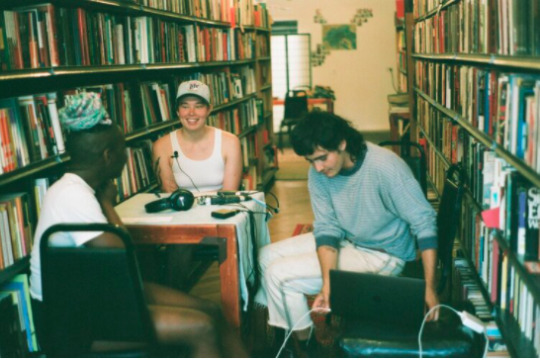





4 notes
·
View notes
Text
instagram
0 notes
Text
Every Breath We Drew (2011-present) - Jess T. Dugan


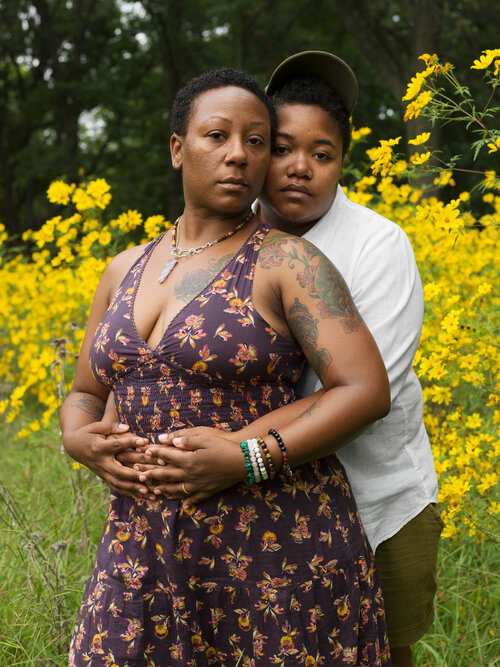
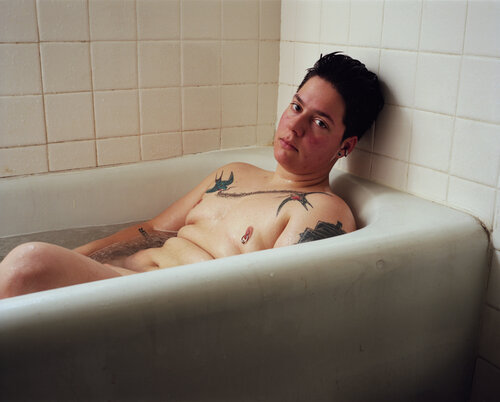






Every Breath We Drew
2 notes
·
View notes
Text
youtube
"It's Okay to Cry," by hyperpop icon SOPHIE. Learn more about SOPHIE and hyperpop here.
0 notes
Text
The musical beyond: gender and genre in the hyperpop scene

Graphic by Zoe Axelrod; from left to right: Laura Les, SOPHIE, and Dorian Electra.
I was first introduced to the hyperpop genre through the music of Dorian Electra (they/them) during a minor kind of gender crisis in my life. I had grown up identifying with a particularly flamboyant kind of femininity. However, upon leaving my big-city hometown to live in a small university town, I found my feminine sartorial theatrics swiftly proved to draw an uncomfortable amount of attention to me, and, over the next few years, found myself dampening my self-presentation into a far more dressed-down and masculine style of dress.
Finding Dorian Electra's music video for their song "Man to Man" while scrolling through YouTube one day, I found myself presented with a model of masculinity that was, for once, not about being dressed down. It was a patently flamboyant masculinity, and one that simultaneously ironized and celebrated the positive qualities stereotypically associated with what it meant to be a man—chivalry, humour, sexual dominance—and which I had long figured as toxic or negative, for their attribution as masculine, in myself. Donning the outfits of all kinds of theatrically masculine fighter-figures—a Roman soldier, a matador, a wrestler, a fencer—while making goofy faces, Electra—who I learned was genderfluid—[1] soon grew to be the biggest breath of fresh air to me, making of masculinity something vibrant, theatrical, and always a little bit silly.
Beyond the content of their lyrics and style of self-presentation, their music was just as exciting to me: their heavily overproduced, overstimulating pop sound felt totally new. Through them, I found myself quickly falling in love with the "hyperpop" genre, which is defined by this overwrought sound and the incredibly palpable influence of trans musicians. Like many others have, I began to notice that the biggest artists in the genre were virtually all trans, non-binary, or gender non-conforming.[2],[3],[4]
While there is no specific reason why this may be, some have speculated that the extremes to which hyperpop pushes the norms of pop music necessarily encompass pop's heavy commitment to normative expressions of gender. Music of the genre often features the extreme pitching of vocals, either way up or way down, in a way that frequently reads as a kind of gender-play.[4] This is particularly the case with the vocals of Dorian Electra, who often also plays with the intonation of their voice in a way that feels like an undeniable practice of gender-fuckery. Furthermore, this loosely-defined kind of music would seem preoccupied with the imbrications of genre and gender, as it is often deeply engaged with the heavily gendered sounds of various sub-genres of pop music, from the heavy dubstep and pop-punk influences of Laura Les to the bubble-gum-pink sound of Kim Petras.
It's perhaps also worth noting that perhaps the founding figure in the genre, the late producer SOPHIE, was trans, and someone who quite overtly and consistently engaged themes heavily associated with trans experience through performing and songwriting. From the donning of uncanny-valley-esque prosthetic cheekbones at concerts and in music videos to the clever connections drawn between consumer culture, self-regulation, and "authenticity" in songs like "Faceshopping," SOPHIE called regular attention to the overdetermination of the self (particularly the [trans-]feminine self). To me, it also felt clear that SOPHIE was often ironizing gender, pulling out the kernel of the masculine in the feminine (check out the song "Hard"),[2] just as I often felt Dorian Electra was in pulling out the feminine at the heart of masculinity (check out the song "Tool for You").
Beyond this, SOPHIE's music is some of the most awe-inspiring, heart-rending music I have yet to encounter. Before I had even learned SOPHIE was trans, this feeling of awe always felt rooted to me in SOPHIE's music being about transition, at an almost mystical level, in all its terror and glory. Listening to "Is It Cold in the Water?" on my headphones always manages to bring me to tears.
While the carving-out of a genre of music so heavily identified with trans and gender non-conforming musicians is, in itself, a wonderful thing when it comes to cultivating greater recognition and celebration of trans artists, those who fall into the "hyperpop" genre often outwardly organize for trans political causes, too. Over the course of the pandemic, in particular, a mostly-trans cast of hyperpop musicians have hosted a number of digital concerts in support of a number of pro-trans organizations, such as the Twitch-streamed release party for Dorian Electra's My Agenda last October, in support of Black Trans Femmes in the Arts.[5]
While the influence of the hyperpop genre has yet to be fully lived out, the musicians who make it up are undeniably performing a kind of cultural remixing in both style and politic, culture and form, that is having an indelible impact on gender, music, art, and life.
SOURCES
Image: Zoe Axelrod, Untitled, photograph, in "How Hyperpop Gives Trans Artists a Voice," Ringtone Magazine, August 13, 2020, https://www.ringtonemag.com/2020/08/how-hyperpop-gives-trans-artists-voice_13.html.
[1] Noisey, "Flamboyant Pop Star Dorian Electra Gets Dressed to Go Nowhere," VICE, May 20, 2020, https://www.youtube.com/watch?v=rF1TEHBUJ84&ab_channel=Noisey/.
[2] Ty Marsh, "Exploring the Trans Roots of Hyperpop," Orange Magazine, October 15, 2020, https://orangemag.co/orangeblog/2020/10/15/exploring-the-trans-roots-of-hyperpop/.
[3] Spencer Kornhaber, "Noisy, Ugly, and Addictive," The Atlantic, March 2021, https://www.theatlantic.com/magazine/archive/2021/03/hyperpop/617795/.
[4] Nic Johnson, "How Hyperpop Gives Trans Artists a Voice," Ringtone Magazine, August 13, 2020, https://www.ringtonemag.com/2020/08/how-hyperpop-gives-trans-artists-voice_13.html.
[5] DorianElectra - Twitch, "My Agenda ONLINE," streamed October 24, 2020, https://www.twitch.tv/dorianelectra/.
#hyperpop#they/them#genderfluid#gender non-conforming#Dorian Electra#SOPHIE#music#musician#genre analysis#autobiographical#autotheory#text#Kenya
6 notes
·
View notes
Text
youtube
“I want you to know that it is not always easy to love me. That sometimes my chest is a field full of landmines, and where you went last night, you can’t go tomorrow. There is no manual, there is no road map, no help line you can call; my body does not come with instructions, and sometimes even I don’t know what to do with it. This cannot be easy. But still, you touch me anyway.”
- Ivan Coyote [1]
SOURCE
[1] Ivan Coyote, "To all of the kick ass, beautiful fierce femmes out there...," April 12, 2010, YouTube, 6:36-7:20, https://www.youtube.com/watch?v=2Q7IzwUa_kI&ab_channel=PancakeHeart.
84 notes
·
View notes
Text
🔥 Hot Tip… Give this playlist a listen while you scroll our blog! 🏳️⚧️🎶
Music knows no boundaries. It moves and shapes us in different ways, allowing us to transport ourselves to different places, feelings, and moments in time. Music has no barriers or binaries, for it is fluid and ever-changing — some of the best music comes from those who aren’t afraid to break the rules of genre, speech, and sound.
Sometimes, music is lifesaving. It gives people hope, something to hold on to, something to relate to. It tells us we are not alone. It provides a connection that can be felt across the world because music defies language, gender, sex, sexuality, and expectation. It is free. It gives us dance and expression and the ability to connect with people simply through waves of sound that make us feel from our brains to our toes.
0 notes
Text
"Warrior Heart" by Shawnee, a single which she used to raise funds for the We Matter Campaign in support of Indigenous mental health.[1]
SOURCE
[1] Amarra Mohamed, “Color of Pride: Shawnee Isn’t Your Typical Queer Pop Singer,” LGBTQ Nation, June 5, 2019, https://www.lgbtqnation.com/2019/06/king-shawnee-isnt-typical-queer-pop-singer/#:~:text=Shawnee%20Lynn%20Talbot%20uses%20her,and%20identifies%20as%20Two%20Spirit/.
1 note
·
View note
Text
"What does being nonbinary mean to you?
Being nonbinary means believing that gender is infinitely possible."— Devin-Norelle [1]
"What is something you would like people to know about nonbinary folks?
Many people believe that nonbinary is a new idea and that nonbinary folks are a fad. Nonbinary people are not a fad, a gimmick or a new concept. We have existed across various cultures for several centuries. Our identities were suppressed by imperialism and as a result, nonbinary people seem to be a recent phenomena to mainstream society, but we've existed almost as long as civilization. Furthermore, it is commonly assumed that nonbinary people don't desire to medically transition. While this is true for many people, many of us do take steps to medically transition, including myself. My transition does not make me feel any more of a man, or any less of a woman. I continue to feel strongly as both some days, and as neither on other days." —Winter Mendelson [1]
I stumbled upon this amazing culture blog — "Them." — during my research for this project. The attached post was what initially drew me into the blog; it features gorgeous headshots and captions from folks who participated in a campaign titled #BeyondtheBinary, created by Jacob Tobia to generate awareness around non-binary identities.
I highly encourage you to also check out the entire blog: "Them." [link]. It features culture, news, entertainment, health, and lifestyle categories, and has a ton of amazing, knowledgable and informative blog posts.
—Short on time? I've picked out a few links that may be of interest below! :) [click title to follow link]
How To Affirm the People in Your Life Who Use Multiple Sets of Pronouns
The Healing Power of Dogs for People Living With HIV
How Do I Know If I’m Nonbinary?
Americans Overwhelmingly Oppose Bills Banning Trans People From Sports
How The AIDS Crisis Prepared Us For COVID — And Shaped Our Response
Puberty Blockers Help Trans Teens Feel Happier and Healthier, Says New Study
This 16-Year-Old Trans Student Just Made History by Testifying in Favor of the Equality Act
This Fashion Collection Turns Catholic Garb Into Queer Fantasy
SOURCE
[1] Meredith Talusan, "This Is What Gender-Nonbinary People Look Like," Them, November 19, 2017, https://www.them.us/story/this-is-what-gender-nonbinary-people-look-like.
0 notes
Text
Sandy Stone
Allucquére Rosanne "Sandy" Stone (she/her) is an audio engineer, performance artist, computer coder, academic, and writer—and a foundational figure in the worlds of both trans activism and theory. Stone is perhaps best-known for her 1987 essay "The Empire Strikes Back: A Posttranssexual Manifesto," which is heavily credited with generating the modern field of transgender studies.[1] Stone wrote the essay in response to a bigoted and much-circulated attack on trans women's inclusion in lesbian and feminist political spaces in the '70s, which used Stone's employment at the lesbian recording studio Olivia Records as a centrepiece for its transphobic argument, and which continues to ground much transphobic ideology to this day. Though Olivia Records remained virtually totally steadfast in their defense of Stone, the pressure from anti-trans demonstrators eventually culminated in the threat of a boycott of the label and, ultimately, Stone's departure from the collective.[2]

Though this incident figured prominently in the histories of transgender theory and activism and the bigoted movements against them, this incident was far from the centrepiece of Stone's life or legacy. Prior to coming out, Stone had had an incredible career audio mixing for some of the most prominent and best-loved musicians of the '60s and '70s: for Jimi Hendrix during her tenure at the Record Plant in New York City and later, while working as a staff audio engineer for Wally Heider Studios in San Francisco and L.A., working with musical giants like Jefferson Airplane, The Grateful Dead, Van Morrison, and Crosby, Stills, Nash, and Young.[1]
She would go on to work and live with the Olivia Records Collective from 1974 to 1978. Though Stone was eventually forced to part ways with the collective, she maintains a positive understanding of her time working with them, having said of it nearly twenty years later: "You didn’t really ‘go to work’ for Olivia; you became part of that collective. It was really a sisterhood at that time, and in a very deep way. I didn’t feel so much that I was being hired, so much as that I was joining a family, one in which we share common goals and beliefs, the primary set of those goals being to make music and politics at the same time."[3]
In 1987, Stone made her return to academia as a Ph.D. student under the supervision of influential interdisciplinary scholar Donna Haraway at the University of California, Santa Cruz's History of Consciousness Department. Here, she would publish "The Empire Strikes Back," alongside other influential contributions to the worlds of transgender theory, cultural and gender studies, computer science and new media, among a host of other disciplines. To enumerate all of Stone's accomplishments would be impossible in such a short post—she has written a number of well-loved science fiction stories, is an accomplished computer programmer and performance artist, and runs a number of semi-regular community-driven events for trans youth, just to name a few—but you can find out more from her incredibly rich and wordy personal website. She is currently a Professor Emeritus at the University of Texas at Austin.[1]
SOURCES
Image: Unknown Photographer, Untitled, photograph, Sandy Stone, https://sandystone.com/sandy-bebekroche-2.html/.
[1] Sandy Stone, "FAQ," https://sandystone.com/faq.shtml/.
[2] Finn Enke, "Collective Memory and the Transfeminist 1970s: Toward a Less Plausible History," TSQ: Transgender Studies Quarterly 5 (1): 23.
[3] Sandy Stone qtd. in Ibid., 22.
3 notes
·
View notes
Text
"You didn’t really ‘go to work’ for Olivia; you became part of that collective. It was really a sisterhood at that time, and in a very deep way. I didn’t feel so much that I was being hired, so much as that I was joining a family, one in which we share common goals and beliefs, the primary set of those goals being to make music and politics at the same time.”
—Sandy Stone on her time with Olivia Records, 1995, qtd. in Finn Enke, "Collective Memory and The Transfeminist 1970s," 23.
0 notes
Text
Shawnee

Shawnee Kish (she/her), better known as just "Shawnee," is an up-and-coming two-spirit Mohawk artist descended from the Six Nations of the Grand River. Fairly new to the musical fame, Shawnee rose to prominence when selected as the winner of the CBC's 2020 Searchlight contest, which seeks to promote little-known musical talent.[1] Her music blends influences from soul and pop genres, as well as those from her own Mohawk heritage.[2]
Despite the newness of Shawnee's rise to fame, she has been incredibly outspoken in aligning herself with activist and political work, using both her music and her public persona to draw attention to issues such as mental health, the suicide crisis facing First Nations communities, and to promote rights and representation for two-spirit, trans, and queer youth.[2],[3] In 2019, she participated in an interview with Kids' Help Phone that centred strongly on her desire to support queer youth and her own two-spirit identity. She describes her identity as a mode of being that was "honoured as a gift in [her ancestors'] community" and, though she recognizes this is not the case for everyone who identifies this way, she describes her own understanding of being two-spirit as "[being] an Indigenous person who carries the gift of knowing, understanding and walking in both gender worlds."[4]
SOURCES
Image: Blondy Photography, Untitled, photograph, Xtra*, June 18, 2020, https://xtramagazine.com/culture/two-spirit-mohawk-singer-shawnee-174446/.
[1] Grant Lawrence, "Searchlight 2020 Winner: Shawnee," CBC, March 5, 2020, https://www.cbc.ca/music/events/searchlight/searchlight-2020-winner-shawnee-1.5484081/.
[2] Jesse Locke, "The 'Warrior Heart' of Two-Spirit Mohawk Singer-Songwriter Shawnee," Xtra*, June 18, 2020, https://xtramagazine.com/culture/two-spirit-mohawk-singer-shawnee-174446/.
[3] Amarra Mohamed, "Color of Pride: Shawnee Isn't Your Typical Queer Pop Singer," LGBTQ Nation, June 5, 2019, https://www.lgbtqnation.com/2019/06/king-shawnee-isnt-typical-queer-pop-singer/#:~:text=Shawnee%20Lynn%20Talbot%20uses%20her,and%20identifies%20as%20Two%20Spirit/.
[4] Kids' Help Phone, "Singer Shawnee Identifies as Two-Spirit. This is Her Story," https://kidshelpphone.ca/get-info/singer-shawnee-identifies-two-spirit-story#:~:text=I%20identify%20as%20a%20proud,based%20in%20Toronto%2C%20Ontario.%E2%80%9D/.
11 notes
·
View notes
Text
Self-Portrait With Mom - Jess T. Dugan (2005-present)
This project (viewable via Jess' website, as it goes against Tumblr's guidelines) is incredibly personal, showcasing Jess and their mother as their bodies and their relationship evolve over time. It began in 2005 after 18 year-old Jess had just gotten chest reconstruction surgery in order to feel better aligned with their gender identity. You can see in the first photo that Jess's chest is still bruised and bandaged. The second photograph was taken in 2010 and Jess has continued to take these photographs with their mother every year since. This project is ongoing as they aim to continue to take these photographs for as many years as possible.
0 notes
Text
Being two-spirit is something that my ancestors knew as a tradition and honoured as a gift in their community. As I grow into the person I’m meant to become, I learn more and more about my spirits and I challenge myself and thoughts to continue on this path, moving forward in this direction. Indigenous people who walk in both worlds — carrying the spirit of both traditional male and female — have strong and powerful gifts, but it comes with its challenges. I’m learning it’s OK to recognize and learn from these challenges through my learned teachings and stories from my Elders who carry the teachings and knowledge of our cultural history and ways we walked.
The term two-spirit for me is not as simple as some would like it to be. I find, as we grow in two-spirit acknowledgement and practice, there is a lot of misconception. For example, the idea of two-spirit being genderless or gender non-conforming may only speak to some two-spirit people. There are many amazing examples and identities under the term ‘two-spirit people.’ For me, being two-spirit is a beautiful, empowering term for an Indigenous person who carries the gift of knowing, understanding and walking in both gender worlds.
—Shawnee Kish on what being two-spirit means for her, from her 2019 interview with Kids' Help Phone
17 notes
·
View notes
Text
Wendy Carlos
Wendy Carlos (she/her) is an establishing figure in electronic music and a trans woman. Carlos first came to prominence with the release of the album Switched-On Bach in 1968, in which she performed a series of pieces composed by Johann Sebastian Bach on a Moog synthesizer.[1] This project, which quickly swelled in popularity, caught the attention of the Grammys—she won three awards for the album in 1970[2]—and was subsequently noticed by director Stanley Kubrick, who hired her to compose the original score for A Clockwork Orange in 1971. She would go on to produce the soundtrack of both Kubrick’s 1980 horror, The Shining, followed by the original Walt Disney production of the sci-fi adventure Tron in 1982. Meanwhile, she continued to produce exciting, innovative music—largely played on the synthesizer, an instrument she is very heavily credited with pioneering[3]—which would provide some of the most obvious, substantial groundwork for the ongoing history of electronic music as a genre.[1]

Wendy Carlos did not come out publicly until 1979, in an interview with Playboy magazine, though she had been living as a woman for several years prior. Though Carlos did not explicitly identify with activism on behalf of herself or any other trans people, she was very outspoken about her transition in this and subsequent interviews, expressing with incredible candour the struggle she had with presenting herself as a public figure in a way that did not align with her gender, underlining her wish “to liberate [herself]” through public disclosure.[3] By virtue of this openness and the simple significance of her contributions to musical history, Carlos has no doubt laid significant groundwork for the acceptance, respect, and celebration of trans artists in the music industry.
SOURCES
Image: Leonard M. Delessio, Wendy Carlos in her New York City Recording Studio, 1979, photograph, The Nation, "Synthesizing Sound and Self," October 15, 2020, https://www.thenation.com/article/culture/wendy-carlos-biography-review/.
[1] Wendy Carlos, "Biographical Notes," http://www.wendycarlos.com/biog.html.
[2] Recording Academy Grammy Awards, "Artist: Wendy Carlos," https://www.grammy.com/grammys/artists/wendy-carlos/1220.
[3] Jude Rogers, "'She Made Music Jump into 3D': Wendy Carlos, the Reclusive Synth Genius," The Guardian, November 11, 2020, https://www.theguardian.com/music/2020/nov/11/she-made-music-jump-into-3d-wendy-carlos-the-reclusive-synth-genius.
[4] L. Vernon Smith, "Playboy Interview: Wendy Carlos," 1979, https://www.digitaltransgenderarchive.net/files/nv935298c.
1 note
·
View note
Text
"Hard" by the late hyperpop star SOPHIE. The song is an excellent example of the way the artist often would satirize and invert the logics of (hetero)normative femininity—here, toward pointing out the "hardness" of the shiny, tight surfaces on and through which modern femininity comes to be: plastic, high heels, shiny ponytails, and all. You can read more about SOPHIE's music and the genre it spawned here.
0 notes
Text
To Survive On This Shore (2013-2018) - Jess T. Dugan



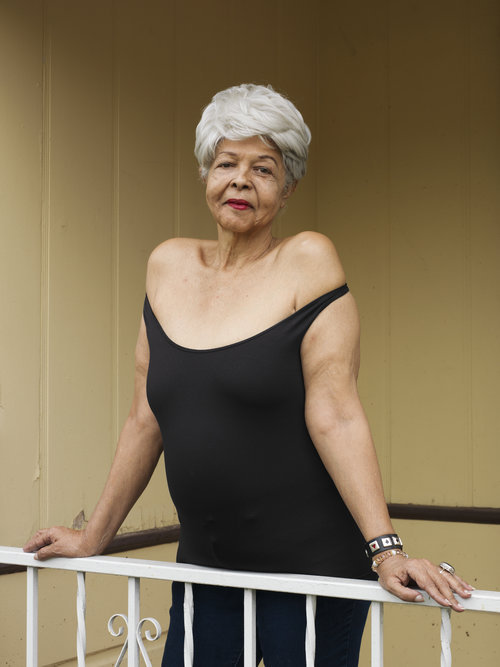
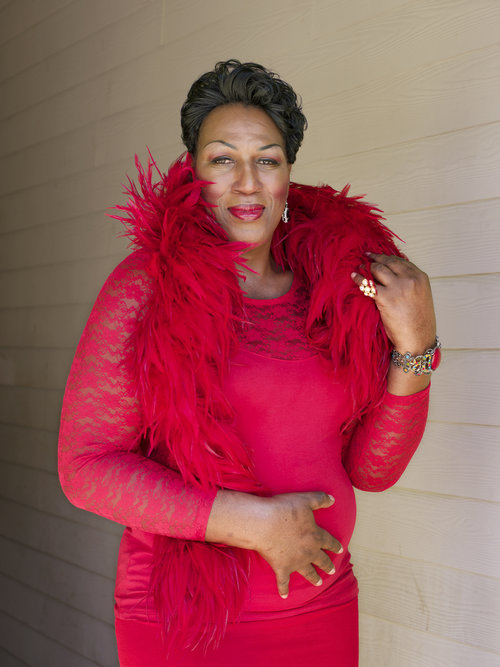

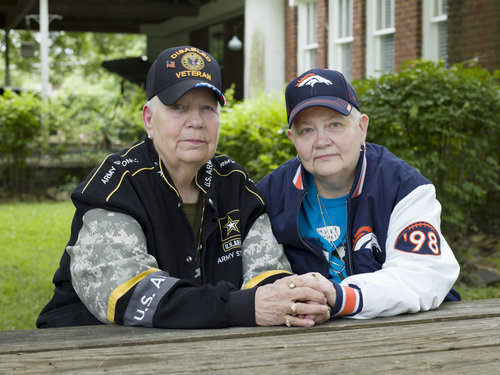



To Survive On This Shore is a project by Jess T. Dugan (they/them) that focused on photographing trans and gender non-conforming older adults. This work upholds and validates the history of transness that is often ignored or erased in mainstream media or history. Trans people have been around for as long as gender has been a construct, and they will continue to exist and thrive. The very existence of older trans adults is a display of resistance and resilience, as to merely exist and survive in transness is constantly tested, challenged, and often met with violence.
"The featured individuals share a wide variety of life narratives spanning the last ninety years, offering an important historical record of transgender experience and activism in the United States. The resulting portraits and narratives offer a nuanced view into the struggles and joys of growing older as a transgender person and offer a poignant reflection on what it means to live authentically despite seemingly insurmountable odds" - Jess T. Dugan
38 notes
·
View notes